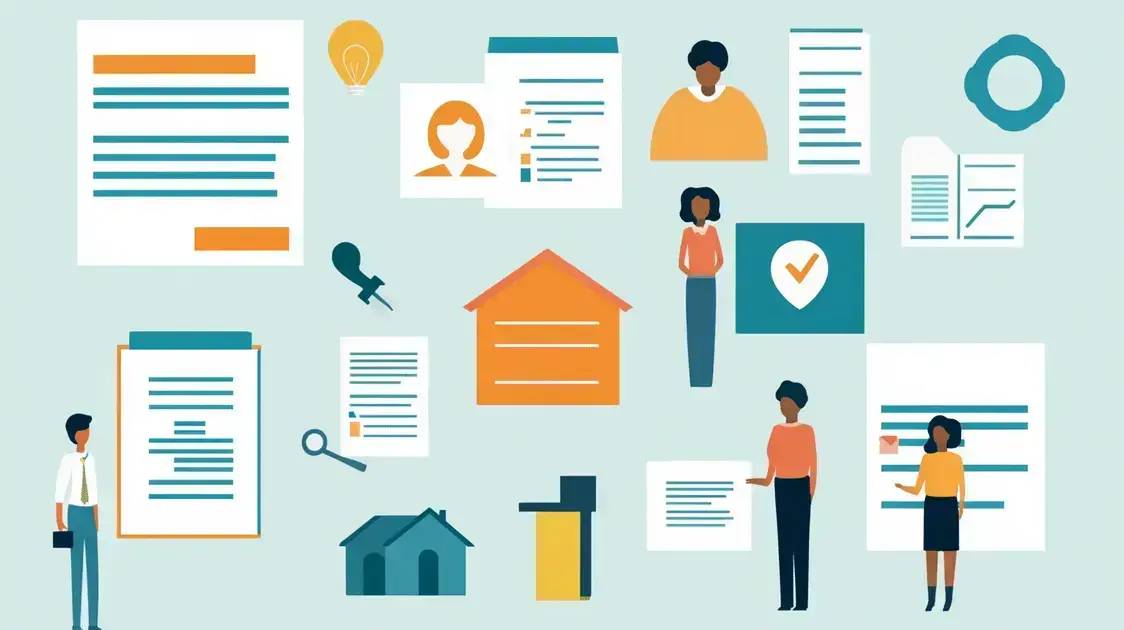ADVERTISEMENT
Are you looking for the best personal loans for low income?
Financial freedom is not just a dream; it can be your reality.
ADVERTISEMENT
With the right personal loan, you can overcome financial challenges and fulfil your goals.
Understanding Personal Loans
Understanding personal loans is essential for anyone considering financial assistance.
ADVERTISEMENT
A personal loan is a type of unsecured loan that allows you to borrow money from a lender.
Unlike secured loans, personal loans do not require collateral, making them accessible for those with low income.
How Personal Loans Work
When you take out a personal loan, you receive a lump sum of money which you repay in monthly installments over a set period.
The amount you can borrow typically depends on your creditworthiness and financial situation. Lenders assess your ability to repay based on your income, existing debts, and credit score.
Types of Personal Loans
There are several types of personal loans available, including:
- Fixed-rate loans: These loans have a constant interest rate, ensuring predictable monthly payments.
- Variable-rate loans: These loans have interest rates that can fluctuate over time, potentially affecting your monthly payments.
- Debt consolidation loans: These loans are intended to combine multiple debts into a single loan, often at a lower interest rate.
Key Considerations
Before applying for a personal loan, it’s important to consider several factors:
- Interest rates: Compare rates from different lenders to find the best deal.
- Loan terms: Understand the repayment period and any associated fees.
- Impact on credit score: Apply for loans wisely, as too many inquiries can negatively affect your credit score.
In conclusion, understanding personal loans will empower you to make informed decisions when seeking financial assistance.
Whether you need funds for an emergency, home improvements, or consolidating debt, being educated about your options is crucial for effective financial management.
Top Features of Low-Income Loans
Top features of low-income loans are designed to make borrowing more accessible for those with limited financial resources.
These loans prioritise flexibility and affordability to ensure that individuals can meet their financial needs without excessive strain.
1. Lower Interest Rates
Low-income loans often come with lower interest rates compared to standard personal loans. This helps borrowers save money over the loan term.
Lenders understand the financial constraints of low-income individuals and aim to offer competitive rates.
2. Flexible Repayment Terms
Lenders of low-income personal loans frequently provide flexible repayment options.
This allows borrowers to choose a repayment period that fits their budget, which can be key for managing cash flow effectively.
Some loans may offer longer repayment terms to ease monthly repayments.
3. Minimal Credit Score Requirements
Many low-income loans have lenient credit score requirements, making them accessible to individuals who may have poor or limited credit histories.
This feature enables more people to qualify for loans and gain access to necessary funds.
4. Quick Approval Processes
Low-income loans often feature faster approval processes.
Many lenders provide online applications that allow borrowers to receive quick decisions, helping them address urgent financial needs more efficiently.
5. Versatile Use of Funds
These loans can typically be used for various purposes, such as home repairs, medical expenses, or debt consolidation.
This versatility makes them appealing to those needing immediate financial relief.
6. Support for Financial Literacy
Some lenders offer additional resources aimed at improving financial literacy.
Borrowers may receive guidance on budgeting, managing debts, and planning for future expenses, empowering them to make informed financial decisions.
7. Customer Support Services
Excellent customer support is a hallmark of reputable lenders offering low-income loans.
They are more likely to provide assistance and advice, ensuring that borrowers understand their options and obligations.
Eligibility Criteria for Low-Income Loans

To qualify for low-income loans, potential borrowers must meet certain eligibility criteria.
These criteria can vary by lender, but there are common factors that many lenders consider when assessing applications.
1. Income Level
Lenders usually require proof of income to determine whether a borrower qualifies as low-income.
This could involve providing pay stubs, bank statements, or tax returns. Loan approval is often tied to your monthly income.
2. Employment Status
Having a stable job is crucial when applying for a low-income loan.
Lenders may prefer borrowers who are employed full-time, but some may accept part-time employment or government assistance as qualifying income.
3. Credit History
Your credit history greatly affects your eligibility.
While low-income loans typically have more lenient credit requirements, a better credit score can still improve your chances of approval and potentially lower your interest rate.
4. Debt-to-Income Ratio
Lenders often assess your debt-to-income ratio to measure your ability to repay the loan.
This ratio compares your total monthly debt payments to your monthly income. A lower ratio indicates a better capacity for managing additional debt.
5. Age and Residency
Most lenders require borrowers to be at least 18 years old and a legal resident of the country.
This ensures that the borrower can enter into a legal contract and has the right to borrow.
6. Documentation Requirements
To apply for a low-income loan, you will need to provide various documents, including proof of identity, address verification, and financial statements.
Being organized and having these documents ready can streamline the application process.
7. Guarantor Option
Some lenders offer the option of having a guarantor for your loan. This is especially helpful for low-income borrowers with limited credit history.
A guarantor agrees to repay the loan if the borrower defaults, making lenders more likely to approve the application.
Best Personal Loan Providers for Low Income
When seeking the best personal loan providers for low income, it is crucial to explore several options that cater specifically to the needs of low-income borrowers.
Here are some top providers that offer personal loans with favorable terms.
1. OneMain Financial
OneMain Financial specializes in providing personal loans to borrowers with lower incomes or poor credit.
They offer flexible payment options and often provide cash loans quickly, making them ideal for urgent financial needs.
2. LendingClub
LendingClub is a peer-to-peer lending platform that connects borrowers with individual investors.
They typically offer lower interest rates for personal loans, and their eligibility criteria are accommodating to low-income individuals.
3. Upstart
Upstart uses alternative data points, such as education and job history, to assess creditworthiness. This can be beneficial for those with limited credit histories.
They have competitive interest rates and are known for quick funding.
4. Avant
Avant is designed for borrowers with less-than-perfect credit.
They offer personal loans that are easily accessible and provide a streamlined online application process, making it convenient for low-income applicants.
5. Payoff
If you are looking to consolidate credit card debt, Payoff may be a good option.
They focus on helping borrowers manage their debts while offering competitive interest rates that fit within a low-income budget.
6. BadCreditLoans.com
This platform is ideal for individuals with poor credit ratings who require loans.
They connect borrowers with potential lenders who are willing to work with low-income applicants, providing a wide range of loan options.
7. SoFi
SoFi offers personal loans with no fees and competitive fixed interest rates.
They focus on borrowers with good credit but are known for extending loans to those with steady incomes, even if their credit score is lower.
It’s essential to compare interest rates, terms, and fees across different lenders to find the best fit for your financial situation.
Each of these providers has unique benefits suited to low-income borrowers.
How to Apply for Low-Income Personal Loans
Applying for low-income personal loans can be straightforward if you follow these steps.
Here is a detailed guide to help you through the application process.
1. Assess Your Financial Needs
Before applying, determine how much money you need and what you will use it for.
Knowing your financial needs clearly can help you choose the right loan amount and type.
2. Research Lenders
Look for loan providers that specifically cater to low-income borrowers.
Consider interest rates, fees, and repayment terms. Online reviews can also give valuable insights into other borrowers’ experiences.
3. Check Your Credit Score
Even if you have a low income, knowing your credit score can help. Lenders may have different eligibility criteria based on credit ratings.
If necessary, address any issues that might negatively impact your score.
4. Gather Required Documentation
Collect documents needed for the application, including:
- Proof of identity (like a passport or ID card)
- Proof of income (such as pay stubs or bank statements)
- Social security number
- Address verification (utility bill or lease agreement)
5. Complete the Application
Visit the lender’s website or office to fill out the application form. Provide accurate information and attach any required documents.
Be honest about your income and financial situation to avoid issues later.
6. Review Terms and Conditions
Before submitting, carefully review the loan terms and conditions. Pay attention to the interest rate, repayment schedule, and any fees associated with the loan.
Ensure you fully understand the obligations before acceptance.
7. Submit Your Application
Once everything is in order, submit your application. Many lenders will provide a decision quickly, often within a few days.
Some may request additional information during this time.
8. Accept the Loan Offer
If approved, review the final loan offer closely. If you agree to the terms, accept the offer and sign any necessary documents.
Funds will typically be disbursed into your bank account shortly thereafter.
By following these steps, you can improve your chances of successfully obtaining a low-income personal loan to meet your financial needs.
Tips for Choosing the Right Loan

Choosing the right loan can be challenging, but following these tips can help you make the best decision:
1. Determine Your Needs
Before applying for a loan, assess how much money you need and what the funds are for.
Understanding your financial requirements helps narrow down your options.
2. Compare Interest Rates
Interest rates can vary significantly between lenders. Compare rates from different loan providers to find the most affordable option.
Even a small difference in rates can save you money over time.
3. Check the Loan Terms
Review the repayment terms and conditions for each loan. Look at the length of the loan and any fees that may apply.
Choose terms that fit your budget and repayment ability.
4. Read Customer Reviews
Research experiences from other borrowers.
Customer reviews can provide insights into the lender’s reliability, customer service, and ease of the loan application process.
5. Understand Fees and Charges
Be aware of any hidden fees associated with the loan, such as origination fees, late payment fees, or prepayment penalties.
Understanding these charges can help you avoid unexpected costs.
6. Evaluate Your Creditworthiness
Your credit score affects the loans you qualify for and the interest rates you receive.
Check your credit report before applying, and work on improving your score if necessary.
7. Seek Professional Advice
If you feel overwhelmed, consider consulting a financial advisor or credit counsellor.
They can offer personalized advice and help you make an informed decision.
8. Take Your Time
Don’t rush into a loan agreement.
Take your time to read through all the paperwork, understand the terms, and ensure it is the right fit for your financial situation.
By following these tips, you can choose a loan that meets your needs and helps you achieve financial stability.
Managing Your Finances Effectively with Loans
Effectively managing your finances with loans requires discipline and smart planning. Here are essential strategies to help you use loans to your advantage:
1. Create a Budget
Before taking out a loan, create a budget to assess your income and expenses. Knowing how much you can afford to pay back each month is crucial.
Make sure to include loan repayments in your budget planning.
2. Set Financial Goals
Establish clear financial goals that you want to achieve with the loan.
Whether it’s consolidating debt, paying for education, or handling emergency expenses, having specific goals keeps you focused and motivated.
3. Maintain an Emergency Fund
While loans can help you manage financial challenges, it’s essential to maintain an emergency fund.
This reserve can cover unexpected expenses without relying on additional loans.
4. Monitor Your Loan Payments
Keep track of your loan repayment schedule.
Set reminders for due dates to avoid late payments, which can incur additional fees and negatively affect your credit score.
5. Avoid Taking Multiple Loans
Taking out multiple loans can lead to financial strain.
Focus on one loan at a time and pay it off before considering another. This strategy helps you manage debt more effectively.
6. Stay Informed About Interest Rates
Keep an eye on interest rate changes. If your loan has a variable rate, knowing when rates increase can help you plan your repayments accordingly.
Always compare your current rates with other options available.
7. Communicate with Your Lender
If you face financial difficulties, don’t hesitate to reach out to your lender.
They may offer options, such as payment deferrals or restructuring the loan, to help you during tough times.
8. Adjust Your Budget as Needed
Your financial situation may change over time.
Regularly review and adjust your budget to align with your current income and expenditure, ensuring that loan repayments remain manageable.
By implementing these strategies, you can effectively manage your finances while using loans as a tool to achieve your financial goals.
FAQ – Frequently Asked Questions about Personal Loans for Low Income
What are personal loans for low income?
Personal loans for low income are designed to assist individuals with limited financial resources, providing them access to funds without the need for collateral.
How can I determine if I qualify for a low-income personal loan?
Eligibility criteria typically include requirements related to income level, credit history, employment status, and debt-to-income ratio.
What features should I look for in a low-income loan?
Look for lower interest rates, flexible repayment terms, minimal credit requirements, and transparent fees. These features can help make your loan more manageable.
How do I apply for a low-income personal loan?
To apply, assess your financial needs, research lenders, prepare necessary documentation, complete the application, and review the loan terms before submission.
What tips can help me choose the right loan?
Determine your needs, compare interest rates, check loan terms, read customer reviews, and seek professional advice to ensure you make an informed decision.
How can I manage my finances effectively while using loans?
Create a budget, set financial goals, maintain an emergency fund, monitor payments, and adjust your budget as needed to manage your loans effectively.





